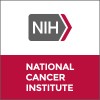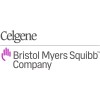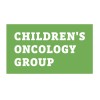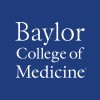
A Phase II Trial of All-Trans-Retinoic Acid in Combination With Interferon-Alpha 2a in Children...
NephroblastomaNeuroblastomaA body of preclinical data has provided a strong rationale for evaluating the combination of IFN-alpha with retinoic acid. The two drugs have different mechanisms of action and, when used in combination, show enhanced activity in both adult and pediatric tumor cell lines. The combination of the antiproliferative and differentiation inducing effect of retinoids together with the antiproliferative, immunostimulatory and differentiation-potentiating effects of IFN-alpha warrant clinical investigation of this combination for the treatment of refractory pediatric malignancies.

A Pilot Study of Immunotherapy Including Haploidentical NK Cell Infusion Following CD133+ Positively-Selected...
NeuroblastomaLymphoma1 moreThis is a pilot clinical trial investigating the addition of haploidentical natural killer cell infusion to autologous stem cell transplantation. This intervention will be evaluated in children with high-risk solid tumors for whom autologous transplantation is indicated. Natural killer cells from a haploidentical family member will be given after high dose chemotherapy and positively selected autologous stem cells. In patients with neuroblastoma, the anti-GD2 antibody hu14.18K322A will also be given. The effect on normal hematopoietic cell recovery will be evaluated and survival of children treated with this approach will be determined. The investigators expect to enroll 36 participants. Haploidentical family members (donors) will also be recruited to provide natural killer cells.

Study to Find a Safe Dose and Show Early Clinical Activity of Weekly Nab-paclitaxel in Pediatric...
NeuroblastomaRhabdomyosarcoma28 moreThe purpose of this study is to find the safe dose of nab-paclitaxel in children with solid tumors, and to see if it works to treat these solid tumors in children and young adults (in Phase 1 ≤ 18 years old and in Phase 2 ≤ 24 years old). After the final dose has been chosen, patients will be enrolled according to the specific solid tumor type, (neuroblastoma, rhabdomyosarcoma, or Ewing's sarcoma), to see how nab-paclitaxel works in treating these tumors.

Study of MLN8237 in Combination With Irinotecan and Temozolomide
NeuroblastomaThe goal of the first part of this clinical trial (Phase I portion) is to study the side effects, drug breakdown (pharmacokinetics), and dosing of the drug MLN8237 when added to standard chemotherapy drugs, irinotecan and temozolomide. The goal of the second part of this clinical trial (Phase II portion) is to learn how many children and young adults show improvements in their neuroblastoma when treated with the combination of MLN8237, irinotecan, and temozolomide.

Crizotinib and Combination Chemotherapy in Treating Younger Patients With Relapsed or Refractory...
Childhood Solid NeoplasmRecurrent Childhood Anaplastic Large Cell Lymphoma1 moreThis phase I trial studies the side effects and the best dose of crizotinib when given together with combination chemotherapy in treating younger patients with solid tumors or anaplastic large cell lymphoma that has returned or does not respond to treatment. Crizotinib may stop the growth of tumor or cancer cells by blocking some of the enzymes needed for cell growth. Drugs used in chemotherapy, such as cyclophosphamide, topotecan hydrochloride, dexrazoxane hydrochloride, doxorubicin hydrochloride, and vincristine sulfate, work in different ways to stop the growth of cancer cells, either by killing the cells, by stopping them from dividing, or by stopping them from spreading. Giving crizotinib together with combination chemotherapy may be a better treatment for patients with solid tumors or anaplastic large cell lymphoma.

ch14.18 Pharmacokinetic Study in High-risk Neuroblastoma
NeuroblastomaThe purpose of this study is to compare the pharmacokinetics (blood levels) and safety of chimeric (ch) 14.18 manufactured by two independent drug makers (United Therapeutics [UTC] or the National Cancer Institute [NCI]).

A Study of CD45RA+ Depleted Haploidentical Stem Cell Transplantation in Children With Relapsed or...
Ewing SarcomaGastrointestinal Tumor11 moreThis is a phase I study designed to determine the feasibility of transplantation using a novel transplant approach that employs a two-stage haploidentical cell infusion following myeloablative conditioning. This strategy, which includes selective depletion of naïve T cells, may speed immune reconstitution thereby potentially reducing the limitations of traditional haploidentical hematopoietic stem cell transplantation (HSCT) and increasing its potential therapeutic application. Additionally, the investigators intend to explore overall survival, event-free survival, hematopoietic cell recovery and engraftment as well as infection rates and complications in these patients.

Enoblituzumab (MGA271) in Children With B7-H3-expressing Solid Tumors
NeuroblastomaRhabdomyosarcoma4 moreThis study is a Phase 1, open-label, dose escalation and cohort expansion trial designed to characterize the safety, tolerability, PK, PD, immunogenicity and preliminary antitumor activity of enoblituzumab administered IV on a weekly schedule for up to 96 doses (approximately 2 years) in children and young adults with B7-H3-expressing relapsed or refractory malignant solid tumors.

High-Risk Neuroblastoma Chemotherapy Without G-CSF
NeuroblastomaPatients will be asked to participate in this study because patients have been diagnosed with high-risk neuroblastoma, a common childhood cancer which has aggressive features. If left untreated, high-risk neuroblastoma is fatal. Children with high-risk neuroblastoma often respond to current available treatments, but there is a high risk that the cancer will return. This study will test the safety of giving standard induction treatment for high-risk neuroblastoma without one of the drugs commonly used to prevent side effects. Current treatment for high-risk neuroblastoma includes anti-cancer drugs (chemotherapy), surgery, radiation therapy and high-dose chemotherapy with hematopoietic stem cell rescue. Treatment takes about one year to complete and occurs in 3 phases: induction, consolidation, and maintenance. This study is limited to the induction phase of treatment. Induction therapy includes six chemotherapy drugs given in different combinations every 3 weeks for a total of 6 courses. For the past decade, induction chemotherapy has been followed by a drug called granulocyte colony stimulating factor (G-CSF, filgrastim, peg-filgrastim, Neupogen, or Neulasta) to prevent side effects from the chemotherapy. G-CSF is routinely given to patients with high risk neuroblastoma after chemotherapy to stimulate white blood cell production and shorten the time period when the absolute neutrophil count (ANC), a type of white blood cell, is low after chemotherapy. G-CSF is known to shorten the period of low ANC by approximately 3 days. When the ANC is lowest, a patient is most at risk of getting a bacterial infection. Recent lab experiments in mice have shown that neuroblastoma tumor cells may respond to G-CSF by growing faster and metastasizing (spreading to other parts of the body). There have been no clinical trials comparing the survival of children with high risk neuroblastoma with or without G-CSF. This clinical trial is the first step towards giving induction chemotherapy with less G-CSF. The goal of this study is to determine if it is safe to give induction chemotherapy to children with neuroblastoma without giving G-CSF routinely.

High-Dose 131I-MIBG Therapy Combined With Vincristine and Five Days of Irinotecan for Resistant/Relapsed...
NeuroblastomaThis is a pilot study to determine whether doses of 15 mCi/kg and 18 mCi/kg of 131I-MIBG are tolerable when given with irinotecan/vincristine on a one week schedule to children and young adults with high-risk refractory/relapsed neuroblastoma.
